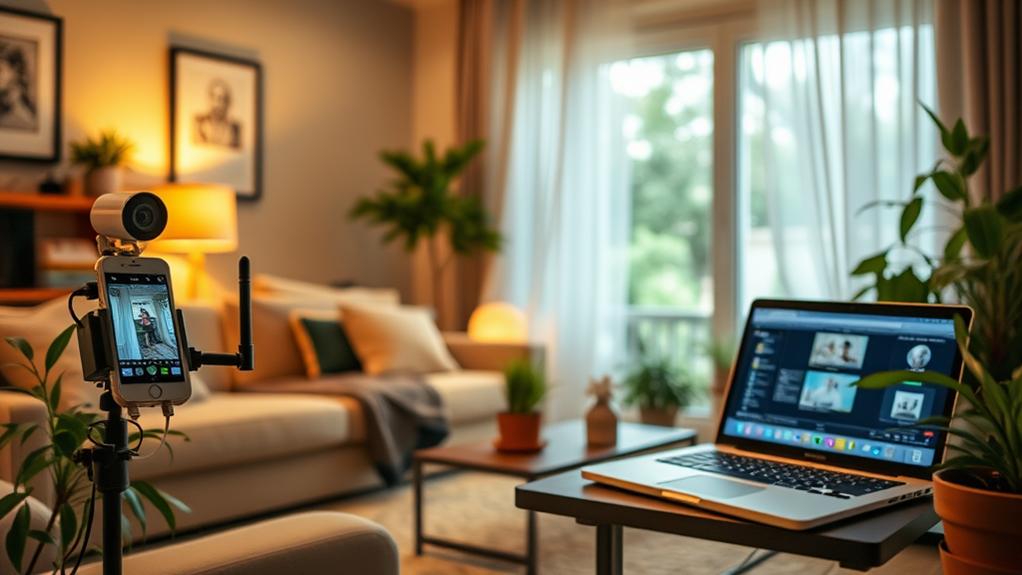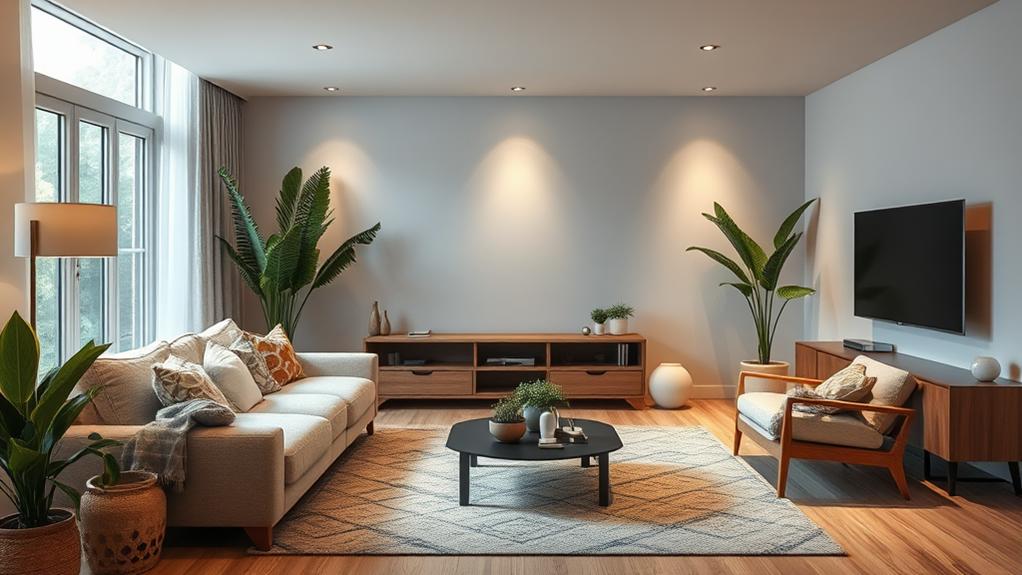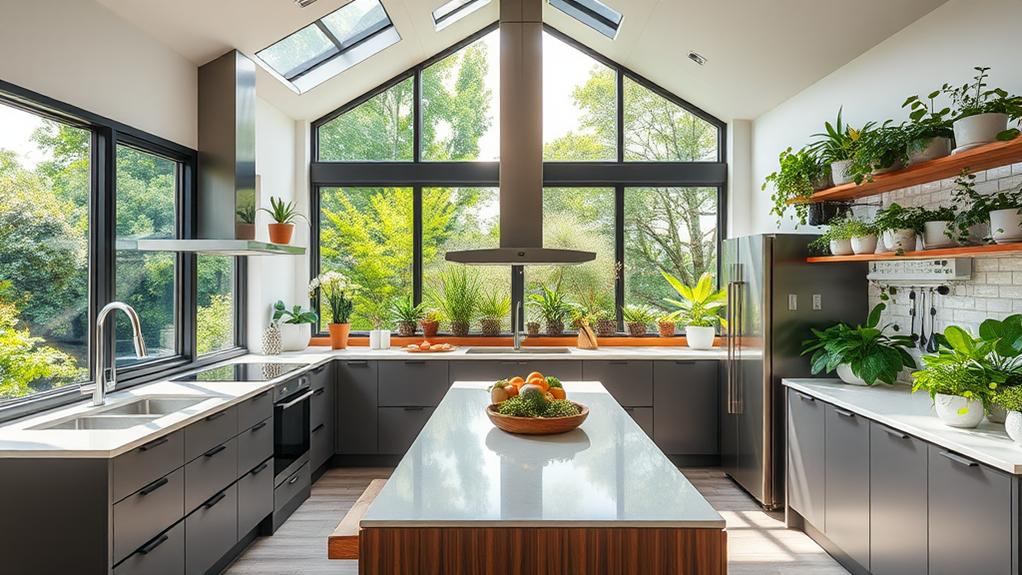You might think improving your home security requires a hefty investment, but that's not the case. With a few simple hacks, you can enhance your safety without straining your budget. For instance, positioning motion-activated lights at key entry points can make a significant difference. Plus, did you know you can turn an old smartphone into an effective security camera? And that's just the beginning; there's also a straightforward way to set up a DIY alarm system. Curious about how to piece everything together for maximum effect? Keep exploring these practical solutions.
Smart Camera Placement Tips
When it comes to securing your home, smart camera placement plays an essential role in maximizing effectiveness. You want to guarantee your cameras cover all critical areas, so start by identifying entry points. Position cameras near doors and windows, especially those hidden from view. This way, you'll capture any suspicious activity before it escalates.
Next, consider the height of your cameras. Mount them at least 8 to 10 feet off the ground to avoid tampering. Ascertain they've a clear line of sight to the areas you want to monitor. Avoid obstructions like trees or fences, which can block the view or create blind spots.
Think about the lighting conditions as well. Indoor cameras should be placed where they can benefit from natural light, while outdoor cameras need to have good night vision capabilities.
If your camera has a motion detection feature, test its range to optimize its placement.
DIY Alarm System Setup
Smart cameras enhance your home security, but pairing them with a DIY alarm system takes your protection to the next level. Setting up your own alarm system can be both fun and rewarding. Start by choosing an alarm system that fits your needs—wired or wireless, it's up to you. Wireless systems are easier to install and require less maintenance.
Here's a simple comparison to help you decide:
| Feature | Wired Systems | Wireless Systems |
|---|---|---|
| Installation | More complex, requires tools | Easier, usually plug-and-play |
| Maintenance | Less frequent, stable connection | Battery changes needed, potential signal issues |
| Cost | Generally lower upfront | Higher upfront, but often includes features |
| Flexibility | Limited to existing wiring | Easily movable and expandable |
| Security | Harder to disable | Vulnerable to signal jamming |
After choosing your system, follow the manufacturer's instructions for installation. Place sensors on doors and windows, and verify the alarm is easily accessible. Don't forget to test the system regularly to confirm everything works as it should. This way, you'll enhance your home security and gain peace of mind.
Integrating Sensors and Automation
A well-integrated home security system can greatly boost your protection. By combining various sensors and automation features, you can create a seamless network that monitors your home around the clock.
Start with door and window sensors that alert you whenever someone tries to gain entry. You can easily set these up to send notifications to your smartphone for real-time updates.
Next, consider integrating motion detectors in strategic areas. These devices can trigger cameras or lights, making your home appear more secure.
You can program your system to activate lights automatically when motion is detected, deterring potential intruders.
Don't forget about smart locks. They allow you to control access remotely and even grant temporary entry codes to guests.
Pairing these with your existing security system enhances convenience and safety.
Conclusion
By weaving these DIY security hacks into the fabric of your home, you're not just reinforcing your defenses; you're crafting a fortress of peace. Imagine the glow of motion-activated lights banishing shadows, the watchful eye of an old smartphone capturing every movement, and the reassuring chime of a home that's always alert. With these simple enhancements, you can turn your house into a sanctuary, where safety and serenity dance hand in hand.











